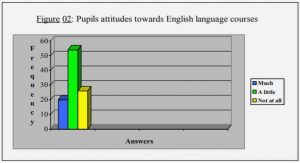Get Complete Project Material File(s) Now! »
QUALITATIVE RESEARCH METHOD
This exploratory study is based on a qualitative approach. Research of a qualitative nature emphasise words and symbols in a specific context with an attempt to understand the social reality of people and how they interpret their surroundings. Quantitative research however generally gathers statistical data with an intention to investigate and examine specific variables and their relationship, focusing particularly on the variables quantity, extent, capacity, and frequency (Christensen et al., 2016). Qualitative research intends to understand how people in a certain social setting experience and perceives things (Creswell, 2014). Such is generally considered appropriate by means of creating clarity within a specific field, concept, phenomenon or research topic marked by confusion or ambiguity. (Jacobsen, 2002).
Therefore, when it comes to research topics intended to explore perceptions, attitudes, associations and meanings of individuals in a social setting an d how they behave accordingly – such as in this study indenting to explore consumers perception of the value of brand heritage of the illustrative brands – a qualitative approach is considered preferable (Creswell, 2014; Christensen et al., 2016).
RESEARCH PHILOSOPHY: INTERPRETIVISM AND SUBJECTIVISM
A research philosophy should reflect a particular study’s approach to knowledge – how new knowledge is developed – based on assumptions about how the world is viewed (Saunders et al., 2009). Epistemology is one way to think about research philosophy and considers how knowledge is formed and the meaning of it. Ontology, however, considers how the reality, hence the social setting being investigated or explored, is viewed (Saunders et al., 2009). There are two major contrasting epistemological approaches applicable to different studies; interpretivism and positivism (Bryman & Bell, 2011). Interpretivism intends to interpret and understand the subjective meaning of a social context considering perceptions of individuals in a social setting as a whole, whereas positivism base conclusions on facts with the assumption that « the researcher is independent of and neither affects nor is affected by the subject of the research » (Remenyi et al., 1998). Furthermore, a main characteristic of positivism is that it intends to make generalisations about a social setting while in contrast interpretivist tend to emphasise the complexities and uniqueness of an ever-changing situation (Saunders et al., 2009).
Subjectivism and objectivism account for two opposing aspects of ontology. They are based on varied assumption of the essence of reality and how it is viewed. Subjectivism assumes that the perceptions of actors in a social setting creates and constitutes the reality. Objectivism however argue that the reality constitutes a social setting which is viewed external to and separated from the actors operating in it (Saunders et al., 2009).
The intention to explore consumers’ perception of the value of brand heritage of the illustrative brands therefore suggests that this study is marked by an interpretivist epistemology supported by a subjective ontology (Saunders et al., 2009).
ABDUCTIVE RESEARCH APPROACH
Literature talks about three different approaches to address a research purpose defined either by deductive, inductive, or abductive reasoning (Bryman, 2016; Jacobsen, 2002)
Deductive reasoning refers to a theory testing approach. Theories or expectations about a specific research topic, social setting, or phenomena are developed and tested against a collection of data, which either confirm or contradict the proposed hypothesis (Jacobsen, 2002; Creswell, 2014; Saunders et al., 2009). The inductive approach is on the other hand referred to as theory building. It generally involves the interpretation and analysis of data collected through the observation of a specific topic, social setting or phenomena by means of generating new understandings about a matter through the development of theories (Jacobsen, 2002; Saunders et al., 2009). Deductive and inductive reasoning might seem rather conclusive in their conceptualisations. However, the abductive approach as another more open approach, combines inductive and deductive elements – those that might be considered most appropriate for the purpose of a specific research paper and therefore support the reasoning behind this study (Bryman, 2016; Jacobsen, 2002).
The authors originally selected the theories after critical evaluation of the research purpose. Data was thereafter collected, interpreted and explored in order to conclude whether it would match the proposed expectations and selected theories. Since theories thus lay the foundation for collecting data, the study incorporates some deductive elements of reasoning (Saunders et al., 2009). Furthermore the authors used qualitative data collection methods to explore and understand consumers’ perception of the research topic, which indicate that some inductive elements complement the deductive ones. Consequently, these statements support the fact that this study is based on an abductive approach (Bryman, 2016; Jacobsen, 2002).
QUALITATIVE DATA AND DATA COLLECTION METHOD
PRIMARY AND SECONDARY DATA
Embraced by a qualitative research approach this research paper exhibits two different sources of data collected through qualitative means. The process of collecting data started with the exploration and analysis of online documents and material about the illustrative brands. Data from such sources is considered secondary since others previously have gathered it with an original intent to serve a different purpose. Even so the authors collected and analysed such data to provide evidence that the illustrative brands qualify as heritage brands in order to further explore how consumers perceive the heritage of these brands based on the collected primary data (Jacobsen, 2002). Nevertheless in order to estimate the reliability and trustworthiness of secondary sources they have to be heavily scrutinized and evaluated to decide whether they qualify as credible sources appropriate for a study to fulfil its intended purpose (Jacobsen, 2002; Christensen et al., 2016). Subsequently, the authors selected semi-structured interviews as the qualitative method to obtain primary data about consumers’ perceptions of the value of brand heritage. Information is thus collected directly from a first-hand source, hence the respondents being interviewed (Jacobsen, 2002). The decision to use a combination of both primary and secondary data stem in the assumption that it is considered highly favourable for a study to gather information from two different kinds of sources (Jacobsen, 2002). As this study collects data by use of both semi-structured interviews and online document analysis, instead of being dependent on a single source, the different types of data will be able to complement, support and control each other. With support from the two sources the findings and final conclusion in this study might be considered more reliable and trustworthy, enabling the fulfilment of the purpose in a highly refined manner (Jacobsen, 2002).
1. INTRODUCTION
1.1. BACKGROUND
1.2. PROBLEM
1.3. PURPOSE
1.4. RESEARCH QUESTION
1.5. METHOD
1.6. CONTRIBUTIONS
1.7. DELIMITATIONS
1.8. DEFINITIONS
2. THEORETICAL FRAMEWORK
2.1. HERITAGE BRANDS
2.2. CONSUMER PERCEIVED VALUE
2.3. CONSUMER PERCEIVE VALUE OF BRAND HERITAGE
2.4. CONSUMER-BASED BRAND EQUITY
2.5. CHOICE Of THEORIES
3. METHODOLOGY
3.1. QUALITATIVE RESEARCH METHOD
3.2. RESEARCH PHILOSOPHY: INTERPRETIVISM AND SUBJECTIVISM
3.3. ABDUCTIVE RESEARCH APPROACH
3.4. QUALITATIVE DATA AND DATA COLLECTION METHOD
3.5. ILLUSTRATIVE BRAND
3.6. DATA ANALYSIS
3.7. TRUSTWORTHINESS
3.8. ETHICAL CONSIDERATIONS
4. EMPIRICAL DATA ANALYSIS
4.1. TRACK RECORD
4.2. LONGEVITY
4.3. CORE VALUES
4.4. USE OF SYMBOLS
4.5. HISTORY
4.6. SUMMARY OF ANALYSIS
5. DISCUSSION
6. CONCLUSION
7. IMPLICATIONS AND LIMITATIONS OF THE STUDY
7.1. IMPLICATIONS FOR THEORY
7.2. IMPLICATIONS FOR RESEARCH
7.3. IMPLICATIONS FOR PRACTICE
7.4. LIMITATIONS OF THE STUDY
8. REFERENCES
9. APPENDIX
9.1. INTERVIEW GUIDE
GET THE COMPLETE PROJECT
Consumer Perception of the Value of Brand Heritage






